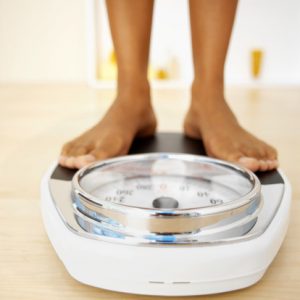
Severe fibromyalgia symptoms have been shown to be linked to obesity and weight gain; furthermore obesity can worsen symptoms associated with fibromyalgia (FM). Previous research has found a link between severe fibromyalgia symptoms and obesity and also suggests that being obese increases a person’s risk of fibromyalgia.
The findings further suggest that fibromyalgia treatment should include weight management in order to reduce symptom severity.
Study author Dr. Terry Oh said, “We see an association between body mass index with symptom severity and quality of life in patients with fibromyalgia. This was the first study to look at distinct groups of obese patients and determine how weight correlates with levels of symptoms and quality of life.”
The researchers examined body mass index (BMI) of 888 patients with fibromyalgia. A BMI score over 30 is classified as obese and nearly half of the patients were in that category. One-quarter of the patients were considered severely obese which is a BMI over 35.
Patients were also asked questions in regards to fibromyalgia symptoms and their ability to perform daily functions. The study revealed that as a patient’s weight increased so did the severity of symptoms associated with fibromyalgia.
Dr. Oh concluded, “BMI has already been singled out as an independent risk factor for fibromyalgia. Our results underscore the importance of incorporating weight management strategies in treatment programs for fibromyalgia patients.”
Previous study links increased risk of fibromyalgia with obesity
Two studies were conducted, one during 1984 and 1986 and another between 1995 and 1997. Over 11 years there were a total of 380 fibromyalgia cases reported by 15,990 women.
Lead researcher Paul Mork said, “Women who reported exercising 4 times per week had a 29% lower risk of FM compared with inactive women. Similar results were found in the analysis of the summary score combining information on frequency, duration, and intensity of exercise; women with the highest exercise level had a somewhat lower risk than inactive women.
The study further shows that a high BMI (i.e., being overweight or obese) is a strong and independent risk factor for future development of FM. Moreover, the higher relative risks for the combined effect of being overweight/obese and inactive, relative to being overweight/obese alone, point to a further disadvantage for overweight women who do not exercise.”
Although the relationship between fibromyalgia and obesity is still quite unknown researchers suggest proinflammatory cytokines may play a role.
Dr. Mork concluded, “These findings, together with the current study, indicate that regular physical exercise, and thereby improved physical fitness, may serve as a buffer against the perpetuation of musculoskeletal symptoms that eventually lead to the development of FM.”
Tips to lose weight with fibromyalgia
Losing weight while being diagnosed with fibromyalgia may be challenging because the disease causes severe pain which may limit movement. Aside from limited movement other factors which can contribute to weight gain in fibromyalgia are lack of sleep, neuroendocrine abnormalities and even medications.
To combat weight gain and promote weight-loss with fibromyalgia these tips can help:
- Eat a high-protein, low-carbohydrate diet
- When eating a meal eat protein first as it will promote fullness leaving you with little room to consume carbohydrates or even sweets
- Only eat until you’re full and avoid overeating
- Give yourself a day off – following a strict diet may be hard so choose a day during the week where you treat yourself (in moderation) and this way you will find following the diet to be easier as well
- Exercise – although it may be painful exercising not only helps promote weight loss but can lessen symptoms. Speak with your doctor or physiotherapist for appropriate exercises and remember to start off easy and gradually bring yourself up
Exercise helps fibromyalgia patients
The researchers pointed out that initial exercise was difficult for the women as pain was a deterrent to exercise but once the women began and gradually moved up their intensity pain subsided.
The researchers suggested that low-impact exercises like walking or swimming are best for patients with fibromyalgia. Additionally, in order to stick with an exercise routine the researchers suggest finding a program which you enjoy.